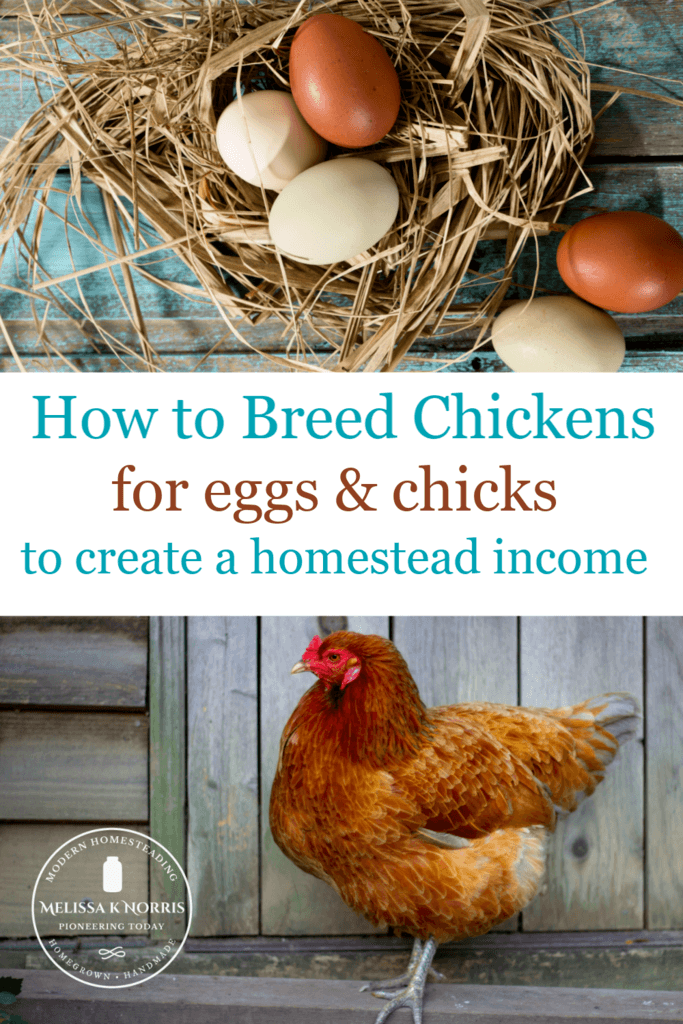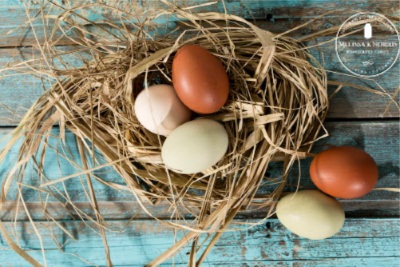Breeding chickens naturally using selective breeding for eggs and chicks, either to build up your own flock or to create a homestead income from your chickens, can be a great way to support yourself and keep heritage breeds alive.
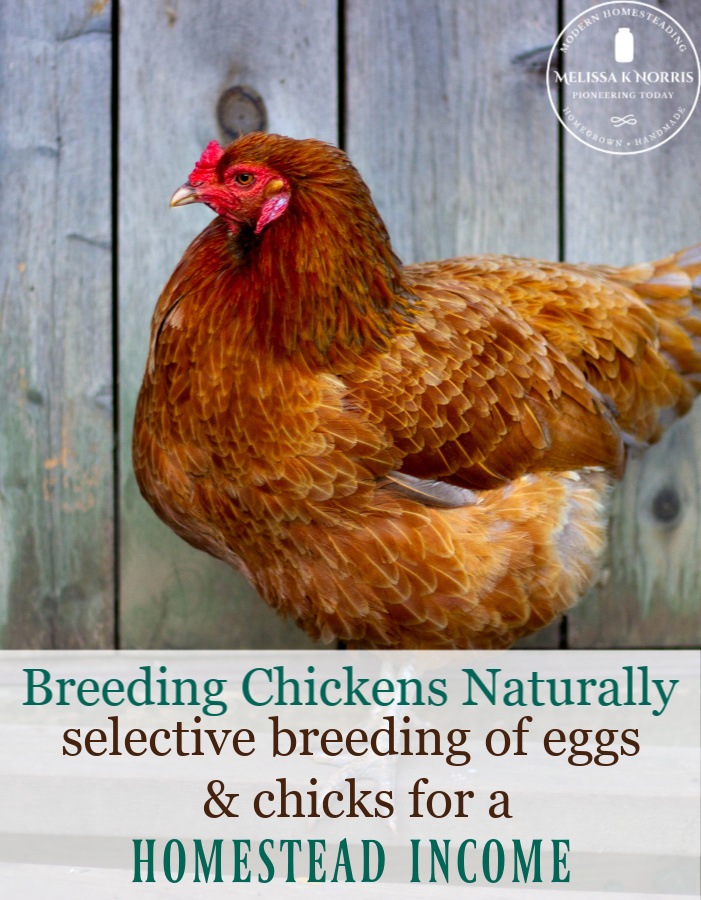
I recently read The Homesteader’s Natural Chicken Keeping Handbook by Amy Fewell and knew I had to have her on the show. I gleaned lots of awesome tidbits from it. She has so much great insight on the hatching and breeding process. Our focus today is on how to have a good breeding program and things to look for if you’re purchasing eggs and/or chicks from breeders.
Breeding chickens at home can be used as a way to bring in income beyond what many usually think about when it comes to raising backyard chickens and selling meat chickens or eggs for income. Amy is going to tell us all about how to breed chickens to earn an income for the homestead.
Listen in below to the full podcast, Episode #234 Breeding Chickens Naturally: Selective Breeding for Eggs & Chicks for a Homestead Income of the Pioneering Today Podcast, where we don’t just inspire you, but give you the clear steps to create the homegrown garden, pantry, kitchen, and life you want for your family and homestead.
Amy: Chicken breeding is the one thing that gets on my husband’s nerves. You can waste a whole lot of money trying to choose your breeds and what you want. I wrote this portion of my book because I didn’t want people to make the same mistakes that I had made…which was spending a lot of money trying to find what you want.
Table of Contents[Hide][Show]
- Selective Chicken Breeding
- Figure Out How to Market
- What Does To Standard Mean?
- Have Fun With It
- Be Selective in Your Breeding Stock
- Is Inbreeding an Issue?
- How Long Are Eggs Viable for Hatching?
- Supplies Needed to Hatch Eggs
- Should the Eggs Be Turned Manually?
- Humidity is Extremely Important
- More Articles on Raising Chickens
How to Breed Chickens for Eggs
Breeding your chickens is a really neat way to bring in an income on your homestead. Mine started because I really wanted French Black Copper Marans. If you don’t know what those are they are the dark egg-laying, chocolate egg chickens. I thought I could just go out there and buy some Marans and start breeding them. Right. Well, you have to go through a process, you need a chicken breeding guide.
Pick which breeds you want from a quality breeder
First, you have to start by figuring out what breeds you want, what the standards are for the breed, and know what you’re looking at. My worst chicken story is when I went to buy some breeding Marans and I got home and they were all covered in lice. I didn’t even check them before I left. And if that wasn’t bad enough, when they started laying their eggs they looked like Orpington eggs. They weren’t dark at all. Breeding to standard is really important and generally you’re not gonna find that in hatchery birds. Even some of these hatcheries that sell rare chicken breeds, they just don’t have this standard that a backyard chicken breeder would have.
So that is my number one tip. When you are thinking about starting to breed and wanting to sell chicks or hatching eggs or whatnot, either to your community or across the country, is to really put your time and investment into finding your stock first and then building on that. Generally your not going to find that at a hatchery. You’re more likely to get into these private little bubbles in your community. There are a lot of Facebook groups that you can join that are breed-specific or breeding specific for chickens. You can find people there that are doing this for a living or as a hobby. Ask for pictures of their birds and of the eggs. Do your research before you get started.
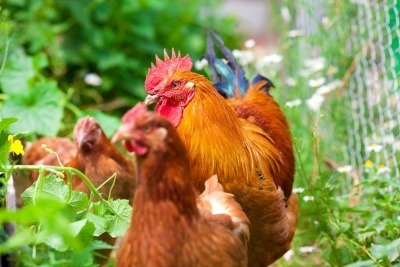
That’s your biggest thing that’s going to be your biggest time consumer and investment. Just to give you an idea, I’ve probably spent about $300 on hatching eggs to get my Maran breeding business going. Even then you take that chance of the egg not hatching, which has happened to me. Spent $100 on eggs and got gypped…none of them were fertile. So you have to be careful.
Selective Chicken Breeding
Once you establish what breed you want, then the fun part begins. It’s your job to protect this breed and continue on with its heritage on your property while also making an income off breeding your birds. So, how are you going to breed them? And how are you going to market this to your community? Obviously you could have a ton of different chicken breeds, but then you would need breeding pens, which is great if you have a lot of time to set up breeding pens and have a large property, but a lot of people I know have smaller properties, so they might want to breed for different types of chickens but they want to free-range too so how do you do that?
I have found that I can do two different breeds, depending on what they are. I wanted to breed Marans, Ameraucanas, and then I wanted to breed Olive Eggers. Coincidentally, when you breed a Maran to an Ameraucana, you get Olive Eggers. So I was able to have one quality Maran rooster with a bunch of Maran hens and a bunch of Ameraucana hens, and then I can pull from both sides. So the Maran breeding with the Marans would produce obviously darker eggs and Marans. But then when I pulled the Ameraucana eggs, I knew that I would get absolutely all Olive Eggers.
You can play around with their housing, you can play around with your breeds and types of eggs. If you just want one breed, that’s fine too. But make sure you’re housing is set-up so that you don’t have roosters hopping fences and then you’re selling chicks that are some barnyard mutt.
Figure Out How to Market
After your housing, you need to figure out how to market to your community. And maybe not your immediate community is going to want what you have, but marketing across the board and nationally. You can ship hatching eggs, you can ship chicks, you can even ship adult birds…it costs a substantial amount of money but you can still do it. But before you do any of that, you generally have to be NPIP certified. It’s a certification through the government that is fairly easy to do. If you don’t want to ship eggs, then you don’t need that certification, depending on your state. You can just find locals who might want to buy your hatching eggs or chicks.
Springtime is a really great time to hatch and start selling. I have found that Facebook is a great place to market. Especially in these rare breed groups people are willing to drive and pick up chicks at your homestead and see what you’re doing. For my Marans when I was heavily into breeding I was selling them for $5 to $15 a chick, which is crazy, but with little effort on your part once you have everything established. You’re basically just gathering eggs and hatching them. The hard part isn’t the hatching, it’s the networking.
What Does To Standard Mean?
There’s always somebody looking for a breed that is to standard. When I say to standard, it means their confirmation is good.
- Plumage color is good.
- Feathers have the correct markings and they look really nice.
- Legs and feet are the right color.
- The combs are the right shape. Different chickens have different types of combs.
- No deformities or anything.
- Egg color is spot on when it’s supposed to be. For example, the French Black Copper Marans had different egg colors. It’s like a scale from 1 to 9, with nine being you can’t ever find it but as you get darker on the scale you can charge more for your hatching eggs and chicks.
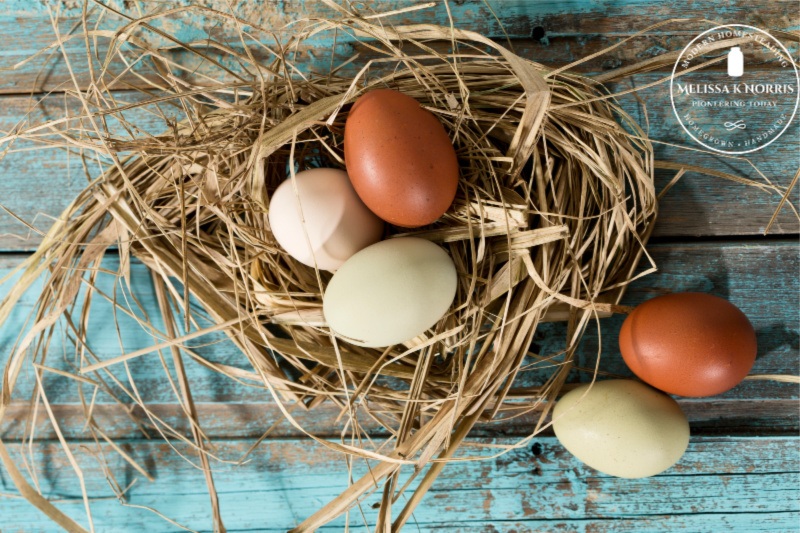
So that’s what you’re looking for to bring in more money on your homestead. If you invest in good quality you’re definitely going get back out of that. Let’s just say you have 10 hens and your collecting from those 10 hens everyday in the springtime, that’s a lot of eggs that you could hatch in one week. And then selling all those chicks, even just $5 a chick or $20 a chick, that’s a lot of income for you. It’s a lot more income than just selling your eggs to eat.
Have Fun With It
It’s a really great way to set yourself up to, as my husband said, it supported my habit of chicken keeping and raising different breeds and just experimenting. That’s the other fun side…it’s just really fun to experiment too. Look at the genetics of your breeding system. If you’re breeding Marans and want darker eggs, then maybe you’ll bring in a different rooster that comes from a different lineage that can make your eggs darker. Or if you’re breeding Olive Eggers, maybe you want your eggs to look a little bit more teal color than the dark olive color. Then you might want to just cross your Olive Egger with another Ameraucana again. So, it’s just so much fun. It can be obsessive once you get into it.
Just look at the genetics that you have and cross over different breeds and different lineages to get what you want because we all want that really colorful egg basket too. So you can do that by breeding and cross-breeding and doing different things with your breeding stock. So it’s just fun and that’s a great income on your homestead if you can perfect your system.
Be Selective in Your Breeding Stock
Melissa: So with your Marans that you first got and their eggs weren’t that dark color, I’m assuming because they had perhaps been crossed somewhere in their lineage and they weren’t purebred. I’m thinking when you’re saying standard, it’s more purebred to get those pure genetics.
Amy: It could be that. The other thing is, when you’re breeding, you want to selectively pull the best from your flocks. Let’s use Marans for example because a lot of people want to own them or breed them. You could have a fluke. You could have a hen that you’ve had this lineage for three, four, or five years and then out pops this hen and she has really light colored eggs. Sometimes that just happens. So at that point your gonna, if you can catch her laying, then you’re going to mark her and you’ll cull her. And cull doesn’t necessarily mean kill. it means just get rid of her from your flock. You could sell her, it doesn’t mean she’s a bad hen, it just means she doesn’t fit into your genetics.
In other words, you don’t want to breed birds that are flawed because then that lighter colored egg in your breeding system can continue to make all of your eggs lighter going through the lineage. Typically hatcheries are so busy that they generally don’t pull the best of the best. They just pull all of the eggs and then, you have this…you’re not bettering the breed. In other words, you’re just continuing to breed them over and over again, no matter what their egg color is. So eventually, that gets into bad quality color. Either with the egg or even with the chickens as well. There are chickens that’ll come out flawed. If it’s a blackbird, it might have some white feathers and instead of just selling them or getting rid of them, they just continue to breed them. Then it continues to make your birds not according to the standard that they should be.
Melissa: When you’re breeding and you’re trying to breed something specific like deepening the egg color, is it usually where you will go to a different rooster or is it the hen or is it a combination? Like, you’re looking to change that to a degree, what’s your best bet?
Amy: It could be either really. If you want to be really snobby about it, which I’m not, there are people who have studied genetics and know it inside and out. They’ll actually write down the genetics of their chickens. The reality is that when you start making changes, you don’t want to change out your whole chicken flock in order to try to get something of better color. So I’ll always start with the rooster because it’s just one rooster.
So I’ll always start with him, but it’s a slippery slope there too, because he’s a rooster, so you really don’t know what he’s going to produce…if you don’t know what hens he came from. A lot of times I will try to mark my eggs. You’ll try to replenish your rooster from within your own lineage because what happens is, if you do bring an outside rooster in, or even hens, it breaks that genetic so even if the rooster is from a darker egg-laying flock, it could actually come in and the genetics could mess up. It could do nothing or it could make your eggs lighter. It just depends on what genetic makeup they are. So it’s always best to replenish from your flock.

For me, I’m pulling the darkest of darkest eggs, which might only be five, and only hatching those five eggs and then putting a leg band on them. That way I know specifically that I hatched them and this is why I hatched them. Then pulling a new rooster and even new hens from that batch and then rotating out my old ones or the ones that I don’t find are satisfactory to our breeding program. In that way, you’re not breaking that genetic makeup. If you introduce a new genetic then you’re breaking that genetic makeup and then the genetics have to figure it out before they really start giving you good quality color. So it’s always best to replenish your stock from your stock. The bad part about that is that it could take years. You could have to breed multiple times and multiple different generations to get what you want. But on the flip side, that’s also the fun part of it too because, after a few years of putting all that hard work into it, you really have something that you strive to create.
Is Inbreeding an Issue?
Melissa: What I’m taking away is that you want to start with as close to what you’re after as possible when you’re buying your breeding stock and then you can refine it throughout the generations. Do you worry about inbreeding by pulling from your same lineage? Is that a risk at some point or does it not really matter so much with birds?
Amy: That’s a really great question. With birds, it is so much more complicated. When you think of flocks in the wild, they just keep breeding. They don’t care whether it’s the brother or sister or whatever. But you do want to try to control that if you can. If your breeding stock is getting bigger and you want to get more out of it then you might want to consider what Harvey Ussury, author of The Small-Scale Poultry Flock, has on his farm. He basically splits his far into two to three different sections. Each designated section has a rooster and hens and they can’t get to the other sections. He utilizes electric poultry netting so that they can still free-range, but one group isn’t able to get to the other group. Then he has breeding seasons. He leg bands everybody, so if it’s the red group they have a red leg band, et cetera. When it’s not breeding season, he just throws them all together and they range together. But when it is breeding season, he separates them into the three flocks. Obviously you would need to wait at least a month before you start pulling eggs because it can take 28 days for the new rooster that’s in with that flock to have taken effect on his breeding. So after you’ve waited a month, then I would give him a couple of weeks after that month and then you can start pulling eggs from each group.
Harvy Ussury has a system that he calls the Clan Mating System. I highly encourage you check it out to see it visually but I’ll try to explain it as best as I can. Each year he rotates the rosters into a different group. So the rooster from the red group gets switched to the blue group. And the rooster from the blue group gets switched to the green group. So the roosters are always rotating while the hens and their offspring are staying in a different group. So you’re getting a wider range of genetics very little inbreeding. So by the time that rooster gets back to his original pen, that’s three breeding seasons. So by that time you’re already rotating out your hens. So the offspring that’s there from him three years ago is so far apart from his genetics that it’s not going to make a difference.
Melissa: That’s good to know.
Pros and Cons of Each Method Possible to Make Money with Breeding
Coming back to the monetary side…obviously, you have a couple of different options:
- Sell the fertilized eggs and ship those for people to hatch them out themselves.
- Sell the just-hatched chicks
- Sell an older bird.
Walk us through the pros and cons of each method and approximately the minimum (this I’m sure is dependent upon how rare the breed and/or better quality stock) amount changed and/or shipped.
Factors to Consider

Amy: It also depends on your region and location too. For example, I’m in the country where I don’t have to deal with traffic, but I’m close enough to the city to where our prices are still higher. So you’ll really need to look at your region and see what compares to what people are charging. Of course, if you’re doing more nationally, it doesn’t really matter.
Selling Hatching Eggs
You can start with hatching eggs by selling as little as six eggs or as many as you want really up to 24 to 48 eggs. Of course, it’s more expensive to ship at that point. Shipping is really, really important too because, as you can imagine, shipping eggs can be a little bit risky. So you’ll need to do your research at the post office on how much it’s going to cost you to package and ship those eggs. Generally, people are willing to pay for that so don’t worry about that too much. Make sure you’re definitely getting your money out of it.
Generally, people like to buy a dozen. What I would do, when I was shipping them, was add a couple extra just in case an egg or two breaks on the way there because it’s inevitable. It could definitely happen. So people who ordered a dozen eggs would get 14 eggs. Generally for Maran eggs or for any good quality stock, the lowest I’ve seen is starting at $50 a dozen. That doesn’t include shipping. It can go up to $200 a dozen, depending on the breed and the quality of your stock. The sweet spot that I have found over the years of doing Marans is between $75 and $125 a dozen. Again, that doesn’t include shipping. Shipping is around $15 to $25 extra on top of that.
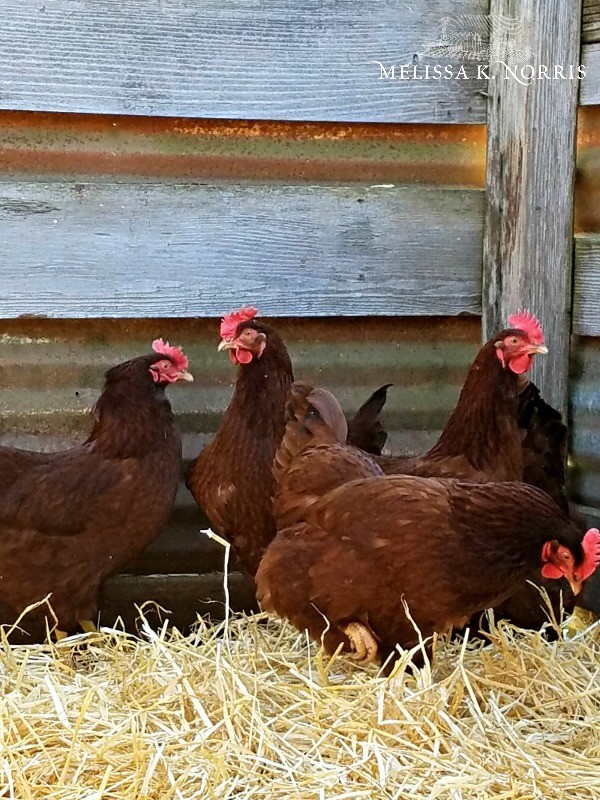
I don’t like shipping eggs, which is why I don’t do it anymore. Used to be years ago that you could ship eggs and the person would be happy even if every single one of them were cracked, as long as you made it good…as long as you sent them another dozen eggs to make good for it. Now it’s extremely competitive and harsh. There are groups, and this isn’t necessarily bad, like bad egg groups on Facebook where people will just call you out, even if there were two broken eggs in their shipment. They just plaster you across the internet. It used to not be like that. It used to be between the buyer and seller and the seller made good when they needed to. Now, it’s the nature of the beast with social media. It’s just a really harsh market. So take that into consideration before shipping eggs.
Selling Chicks and Adult Birds
What I really enjoy is selling chicks and adult birds. Chicks are easy to sell. People love to buy chicks anyhow because hatching eggs can really be hit or miss if the person doesn’t know what they’re doing. You know, they pay $150 for hatching eggs and the eggs don’t because they don’t know what they were doing, that still falls on you as the seller. So I really enjoy selling and mailing chicks. Just again, make sure you do your research on that.
Generally, I don’t take less than $5 a chick but have gone up to $15 a chick depending on quality and breed. I know that’s a really wide range but you don’t want to undersell yourself either. You’ve put in a lot of time and effort into breeding these birds so you want to get compensated as such. It’s not something people can go buy from the hatchery. You have something unique that you’ve worked on and so people should know that they’re going to pay more for that.
As far as adult birds, I’m getting $25 to $75 a bird. Again, depending on what they are and what their quality is, but generally, it’s on the lower end. It’s between $25 to $35, because the birds that I would be getting rid of aren’t birds that I would keep in my lineage. So you’re generally going to sell stock that isn’t top bar stock, but still really good. Again, really a lot better than those hatchery birds. Even some of my good quality hatchery birds I sell them for $25 a hen. That’s my region so I can do that. I have a friend that lives in Mississippi and she could not do that. People would think she was crazy and that she’d lost her mind.
I can consistently sell hens around here for $25 each. Hens don’t eat a ton, especially if they’re free-ranging so you’re making good money on them. Basically what people do is they keep their hens that they’ve hatched and see what quality they have and then they cull or get rid of hens that don’t meet their standard. So generally those are the hens you’re going to see people selling. They’re still great quality, they’re just not maybe as brightly colored as they could be or the egg quality might not be as good as the breeder particularly wanted for their breeding stock.
Melissa: And food production-wise, when you’re culling them, it’s just fine if it’s someone who just wants the hen for eggs, not necessarily for breeding.
I know when I order from hatcheries they have a minimum which helps the chicks stay warm and they ship them overnight. Do you have a specific minimum on the chicks?
Amy: You would need to have a specific minimum so you would need to take that into consideration. Generally, you would want to hatch chicks so that they are hatching out over a weekend so that you can ship first thing on Monday morning. That way they can get there on Tuesday or at the latest Wednesday. There are little gel packs and stuff that hatcheries purchase to put in the box with the chicks. You would also need to take into consideration the season. A lot of home breeders don’t ship chicks until it’s springtime and warm enough outside to make sure the chicks get there in a timely manner and stay warm. Generally your minimum, even with warm weather, is six chicks. So, depending on the state, you might have different laws for different states, but you don’t typically go less than six.
In fact, it’s recommended to do no less than 12 but a lot of people are able to get away with six chicks, even the big hatcheries, and they do just fine. That’s why there are breeding seasons for their chickens because you don’t want to be shipping chicks in the middle of January and they get stuck in a post office in the middle of a snowstorm or they don’t get to the person in time. Or just the weather, in general, is super cold for them.
How Long Are Eggs Viable for Hatching?
Melissa: Is there a time period that’s ideal from time of gathering the egg to starting the development process? At what point does it start to break down and you’ve lost that window of actually developing a chick?
Amy: I’ve found that seven days is your window of opportunity there. I find that fertility starts to decrease after a week. Which is good news for people that only have four birds that want to hatch a lot of eggs at one time and are only getting a few eggs a day, which I was in the beginning. I would make sure you’re not keeping your eggs any longer than seven days before you put them in an incubator. While you’re waiting to hatch those eggs, make sure to store them with the pointed side down or laying flat like on the counter like they naturally would lay. That way the air sac stays intact and in the proper spot.
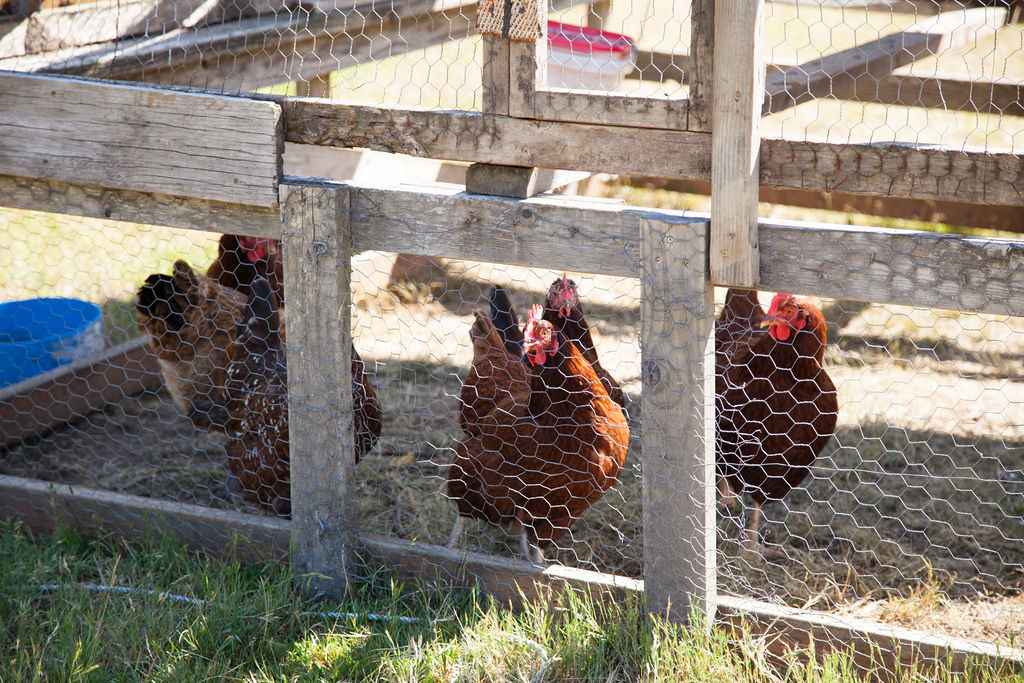
Melissa: Good tip there.
Supplies Needed to Hatch Eggs
I assume that you’re not having the hen hatch out the babies because you don’t want to put her through that….taking the chicks away right after hatching. You have a little bit more control with being able to do larger batches with using an incubator versus letting the hen do it herself. Do you have any quick tips or info on selecting an incubator and hatchery supplies?
Amy: I really love the Brinsea Incubators. We have used them for years and have used different ones from them and tested them out to see what kind works on our homestead. They make one as small as a six egg incubator to as big as a cabinet incubator. All of them in our experience have worked really well for us. The nice thing is that you have control over the humidity and the timing…you can kind of control when they’re going to hatch. Especially if you want them to hatch on a weekend or a Monday.
My experience with broodys is that they come when they want to come, depending on the weather. The other thing is that you can band the chicks leg to keep track of what it is. A lot of people will have two different breedings going on at one time so they’ll hatch two different types of eggs at one time. For this reason, you have that control where you can band their leg so that you know what type of chicken it is. Find a good incubator that does a lot of the work for you, whether that’s the Brinsea incubator or another brand, as long as it is keeping track of your humidity and number of days and what the temperature is, that takes a lot of the stress off of you.
I would also buy an additional reptile thermometer to put into the incubator to figure out what the humidity is. I would invest in one for every incubator you have because sometimes the incubator humidity level that it’s telling you could be a little bit off and humidity is really, really important in hatching chicks.
Melissa: Why is the humidity so important? And do any of these incubators actually turn the eggs or do you need to do that manually?
Should the Eggs Be Turned Manually?
Amy: A lot of incubators nowadays do turn the eggs. That’s one of the amazing automatic things that they do. Used to be, like when I started hatching eggs, that you would get one of those big Styrofoam incubators where you would have to turn them manually. That’s really hard to do when you’re working during the day away from home. Most new incubators come with automatic turners. The eggs get turned every few hours side to side. You can still manually turn and some people think they have a better hatch rate. I haven’t seed any difference in my hatches. In fact, I would say I’ve seen a better increase in hatch rate when I use the turner because it’s less me touching the egg physically every day, which allows bacteria and stuff to get into the egg. But if you’re going to turn manually, then you would want to turn at least once in the morning and once in the evening, but ideally three times a day.
Humidity is Extremely Important
Now, humidity is extremely important, maybe even more so than temperature. The temperature can fluctuate and that’s okay as long as it’s not going three degrees either way, you’re fine. Think about a broody hen. She’s up and moving around all the time. Those eggs are just fine. But humidity is something we have to replicate in the hatching environment because when a broody hen hatches, she’s automatically got that humidity underneath her feathers. Her skin is touching those eggs while she’s hatching, which creates a naturally humidity and moisture for those eggs; it keeps the chicks floating.
It keeps the chick moving throughout the egg. It helps the air move throughout the egg as it needs to. But then, if you have too high a humidity, which a lot of people wind up having, then it can cause the yolk not to be completely absorbed into the chick, which is a whole other issue. It can cause bacteria in the egg and can cause a low hatch rate. The day of hatching, if it looks like the chick has a belly button, the humidity was too high at some point, possibly even hatching day from all the other chicks hatching.
On the other hand, if your humidity is too low then the chicks might do fine growing, but come hatch day their not going to be able to hatch themselves. There’s a membrane inside of the egg and if that membrane doesn’t stay moist and almost becomes like leather and shrinkwraps that chick inside. So it can be a perfectly healthy chick, but without the proper humidity, it can’t hatch on its own. That’s where you’ll see a lot of people helping eggs hatch, which isn’t generally recommended. However, I do help eggs hatch if it’s been more than 48 hours and they’re not coming out.
If the humidity’s too low they get shrink-wrapped and they can’t hatch, or the humidity is too high, then there could be bacteria in the egg or the egg won’t absorb enough. Which both situations can cause the chick to die whether it’s in the egg or once they hatch.
Melissa: So, humidity is really important. I didn’t realize it played all those different roles.
For those that don’t know, Amy started the Homesteaders of America Conference. When she first started she didn’t have a lot of community locally where she could bounce ideas off of or ask questions. And she’s not much of a traveler. A friend recommended that she start her own conference since she couldn’t travel to any others. It was started with a wing and a prayer with the hopes that everything would fall into place. And it did! That first conference attendance estimates (and hopes) were that maybe 300 people would show up…over 1200 people were there!
2019 was the third year of the conference and they had over 3000 people attend. She also has an online membership for those who can’t travel to attend. How awesome is that? Visit the Homesteaders of America Conference to see the speaker line-up. They are concerned that they may have to cap off the attendance so they are encouraging people to get their tickets online in advance.
I’m excited to say that I will be one of the speakers this year at the conference! I feel this homesteading movement just keeps continuing to grow and I’m proud to be a part of this effort of bringing people together and forming this community. This story from Amy explains perfectly why Amy does this conference.
“The first year we were doing lectures, we were in between lectures and I was coming off the stage after telling people it was lunch break. And there was this man sitting in the front row holding his young child and she was asleep. I was just standing there, half-aware of him being there and he looks at me and he goes, “Thank you.” And I said, thank you for what? And he goes, thank you for doing this. He said, you know, they lived in a totally different state, and my wife and I had been living this lifestyle for at least 12 years. And you know, we have children and we’ve adopted children and we live mostly off-grid. We grow all our own food. He said you don’t know how many friends we’ve lost and how many family members think we’re crazy for the number of kids that we have and the, and just striving to grow our own food. He said we don’t have anybody.
And he said, when we got here today, the first hour into the first lecture, my wife looked at me and said, we finally belong somewhere. This is where we belong. He said that for the first time, and he just broke down crying, for the first time in 12 years we feel like we actually belong somewhere. And ever since then that has been my mission with the Homesteaders of America Conference…to make everybody who’s living this lifestyle feel like that they belong somewhere and that we’re all in this together and that it’s normal to do this thing. It was actually more normal to than modern life is now. And so it was just really encouraging and inspiring to hear him say that.”
This encapsulates why I do everything that I do as well.
Where you can find Amy:
The Fewell Homestead Blog
Homesteaders of America Conference
Facebook
Instagram
YouTube – Fewell Homesead
YouTube – Homesteaders of America
Resources:
The Homesteader’s Natural Chicken Keeping Handbook
The Small-Scale Poultry Flock
NPIP
Using the Clan Mating System
Brinsea Incubators
Reptile Thermometer
Homesteaders of America Conference
More Articles on Raising Chickens
- 5 Tips to Raising Backyard Chickens
- Raising Chicks – Beginner’s Guide to the First 6 Weeks
- Using Chickens in the Garden
- Storing & Preserving Eggs Farm Fresh Eggs Primer
- 10 Tips on Raising Chickens for Meat
- Raising Chickens for Profit
- Troubleshooting Chicken Health & Best Herbs for Chickens
- Butchering Meat Chickens
Grow more in your garden this year with my new book The Family Garden Plan: Grow a Year’s Worth of Sustainable and Healthy Food
Order the Family Garden Plan: Raise a Year’s Worth of Sustainable and Healthy Food and all the bonuses to grow your food here . You’ll learn cold frames and season extenders, composting, and so much more!
